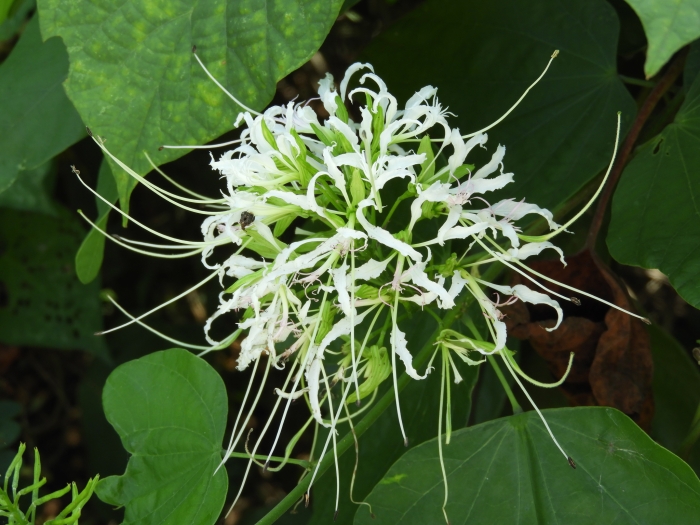Pom Pom Orchid Tree
(Bauhinia divaricata)
Pom Pom Orchid Tree (Bauhinia divaricata)
/
/

Francisco Farriols Sarabia
CC BY 4.0
Image By:
Francisco Farriols Sarabia
Recorded By:
Copyright:
CC BY 4.0
Copyright Notice:
Photo by: Francisco Farriols Sarabia | License Type: CC BY 4.0 | License URL: http://creativecommons.org/licenses/by/4.0/ | Rights Holder: Francisco Farriols Sarabia | Publisher: iNaturalist | Date Created: 2018-10-16T10:40:17-07:00 |

































Estimated Native Range
Summary
Bauhinia divaricata, commonly known as Pom Pom Orchid Tree, is an evergreen shrub or small tree native to dry forests and thickets in the Caribbean, Central America, and Mexico. It typically grows to a height of 12-18 feet (4-5 meters) and a width of 6-12 feet (1.8-3.7 meters). The plant is notable for its distinct two-lobed leaves, which resemble a butterfly or an orchid flower in shape. Bauhinia divaricata produces showy, fragrant flowers that are cream to white, often with a pale yellow or pink center, blooming profusely in the spring and summer months.
The Pom Pom Orchid Tree is valued for its ornamental flowers and its ability to attract pollinators such as bees and butterflies. It is used in tropical and subtropical landscapes for border planting, as a specimen tree, and in urban environments due to its moderate size and drought tolerance once established. This species prefers full sun but can tolerate light shade. It requires well-drained soils and is relatively low-maintenance, needing only moderate watering. While it is not known for major disease problems, it can be susceptible to leaf spot and root rot if overwatered or planted in poorly drained soils. Bauhinia divaricata is not typically invasive, but gardeners should be aware of its potential to spread in ideal conditions.CC BY-SA 4.0
The Pom Pom Orchid Tree is valued for its ornamental flowers and its ability to attract pollinators such as bees and butterflies. It is used in tropical and subtropical landscapes for border planting, as a specimen tree, and in urban environments due to its moderate size and drought tolerance once established. This species prefers full sun but can tolerate light shade. It requires well-drained soils and is relatively low-maintenance, needing only moderate watering. While it is not known for major disease problems, it can be susceptible to leaf spot and root rot if overwatered or planted in poorly drained soils. Bauhinia divaricata is not typically invasive, but gardeners should be aware of its potential to spread in ideal conditions.CC BY-SA 4.0
Plant Description
- Plant Type: Shrub
- Height: 12-18 feet
- Width: 6-12 feet
- Growth Rate: Moderate
- Flower Color: Cream, White
- Flowering Season: Spring, Summer
- Leaf Retention: Evergreen
Growth Requirements
- Sun: Full Sun
- Water: Medium
- Drainage: Medium, Fast
Common Uses
Bee Garden, Bird Garden, Butterfly Garden, Fragrant, Hummingbird Garden, Low Maintenance
Natural Habitat
native to dry forests and thickets in the Caribbean, Central America, and Mexico
Other Names
Common Names: Bull Hoof, Moco John, Pata-De-Vaca, Petit Calecon, Bois Calecon, Collegue Matourin, Huella De Chivo, Mocco John, Pata De Cabra, Pata De Chivo
Scientific Names: , Bauhinia divaricata, Bauhinia mexicana, Bauhinia peninsularis, Bauhinia goldmanii, Bauhinia latifolia, Bauhinia porrecta, Bauhinia retusa, Bauhinia confusa, Bauhinia divaricata var. angustiloba
GBIF Accepted Name: Bauhinia divaricata L.